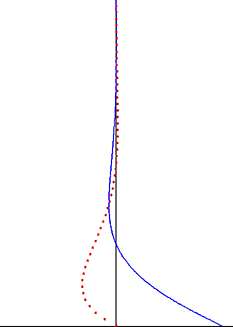
In fluid dynamics, Stokes problem also known as Stokes second problem or sometimes referred to as Stokes boundary layer or Oscillating boundary layer is a problem of determining the flow created by an oscillating solid surface, named after
Sir George Stokes
Sir George Gabriel Stokes, 1st Baronet, (; 13 August 1819 – 1 February 1903) was an Irish English physicist and mathematician. Born in County Sligo, Ireland, Stokes spent all of his career at the University of Cambridge, where he was the Lu ...
. This is considered one of the simplest unsteady problem that have exact solution for the
Navier-Stokes equations. In
turbulent
In fluid dynamics, turbulence or turbulent flow is fluid motion characterized by chaotic changes in pressure and flow velocity. It is in contrast to a laminar flow, which occurs when a fluid flows in parallel layers, with no disruption between ...
flow, this is still named a Stokes boundary layer, but now one has to rely on
experiments
An experiment is a procedure carried out to support or refute a hypothesis, or determine the efficacy or likelihood of something previously untried. Experiments provide insight into cause-and-effect by demonstrating what outcome occurs when ...
,
numerical simulations or
approximate methods in order to obtain useful information on the flow.
Flow description
Consider an infinitely long plate which is oscillating with a velocity
in the
direction, which is located at
in an infinite domain of fluid, where
is the frequency of the oscillations. The incompressible
Navier-Stokes equations reduce to
:
where
is the
kinematic viscosity
The viscosity of a fluid is a measure of its resistance to deformation at a given rate. For liquids, it corresponds to the informal concept of "thickness": for example, syrup has a higher viscosity than water.
Viscosity quantifies the int ...
. The pressure gradient does not enter into the problem. The initial,
no-slip condition
In fluid dynamics, the no-slip condition for viscous fluids assumes that at a solid boundary, the fluid will have zero velocity relative to the boundary.
The fluid velocity at all fluid–solid boundaries is equal to that of the solid boundary. C ...
on the wall is
:
and the second boundary condition is due to the fact that the motion at
is not felt at infinity. The flow is only due to the motion of the plate, there is no imposed pressure gradient.
Solution
The initial condition is not required because of periodicity. Since both the equation and the boundary conditions are linear, the velocity can be written as the real part of some complex function
:
 In fluid dynamics, Stokes problem also known as Stokes second problem or sometimes referred to as Stokes boundary layer or Oscillating boundary layer is a problem of determining the flow created by an oscillating solid surface, named after
In fluid dynamics, Stokes problem also known as Stokes second problem or sometimes referred to as Stokes boundary layer or Oscillating boundary layer is a problem of determining the flow created by an oscillating solid surface, named after  In fluid dynamics, Stokes problem also known as Stokes second problem or sometimes referred to as Stokes boundary layer or Oscillating boundary layer is a problem of determining the flow created by an oscillating solid surface, named after
In fluid dynamics, Stokes problem also known as Stokes second problem or sometimes referred to as Stokes boundary layer or Oscillating boundary layer is a problem of determining the flow created by an oscillating solid surface, named after